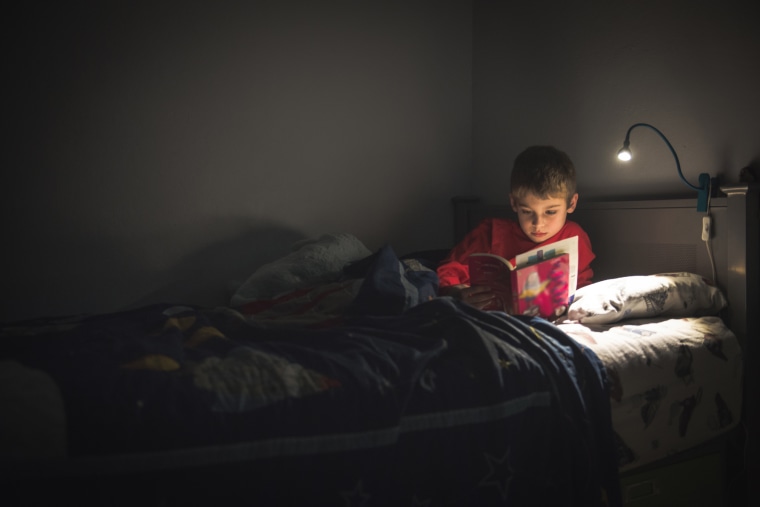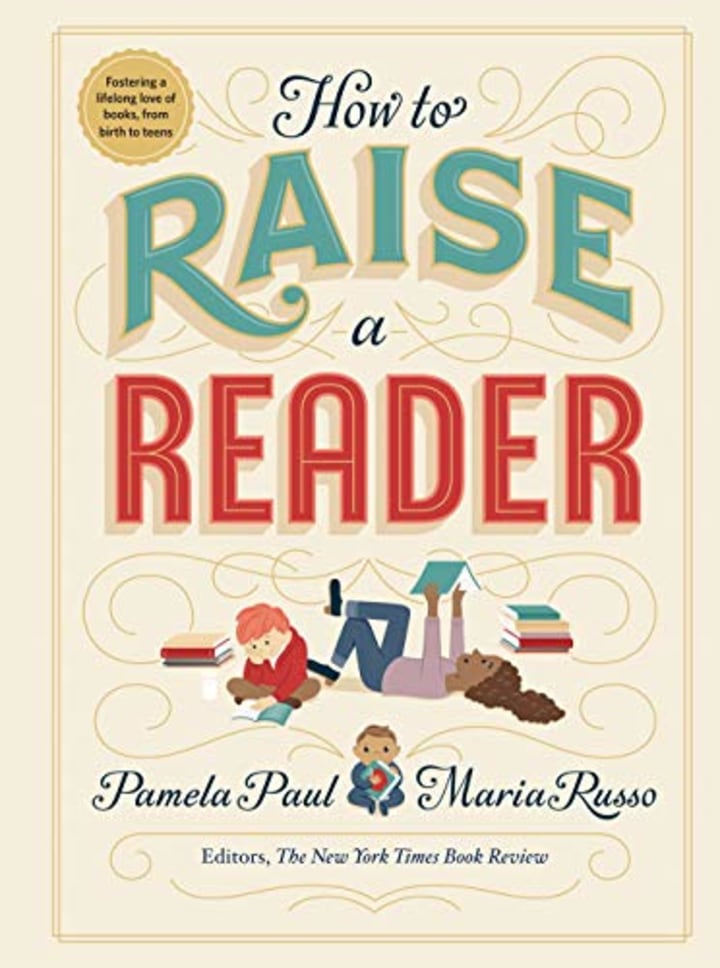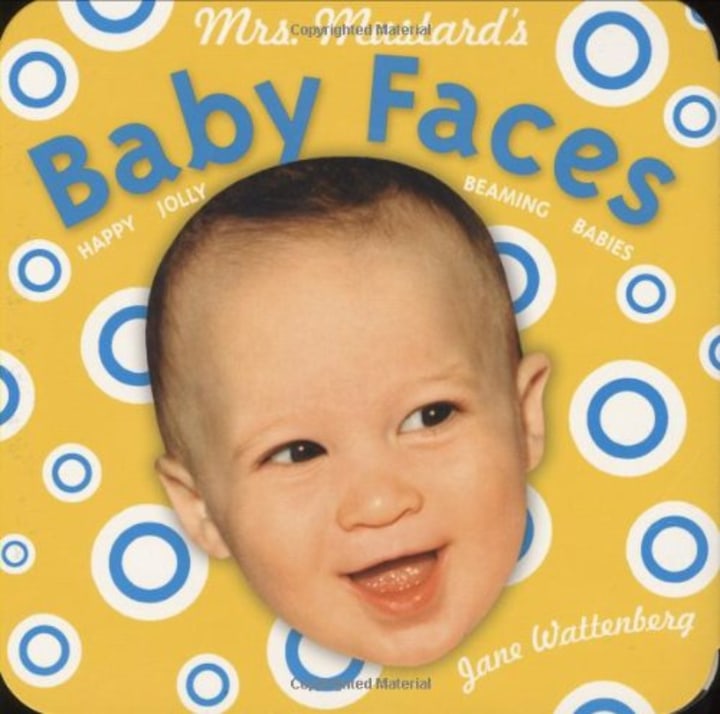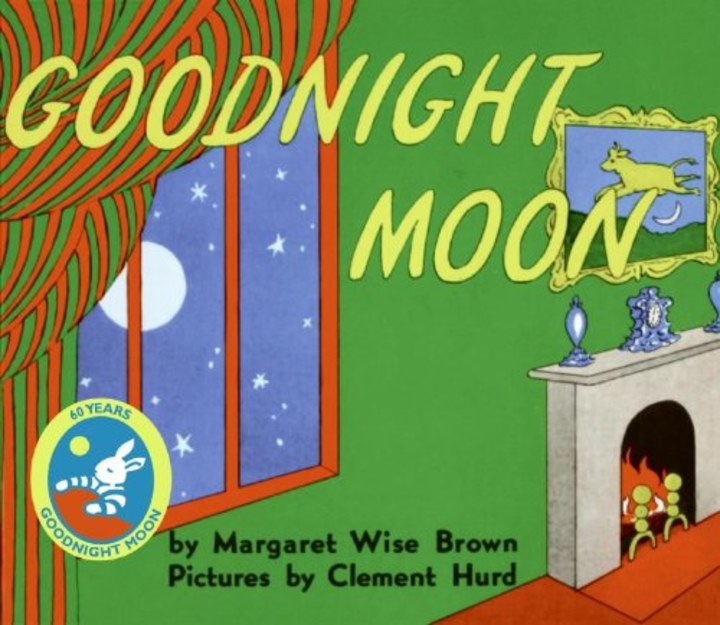In 2017, Pamela Paul, the editor of The New York Times Book Review, and Maria Russo, the publication’s children's books editor, published their expansive article “How To Raise A Reader”. The piece, which served as a digital guide for parents looking to build and nurture their child’s appreciation of reading, was a smash success, and developing the article into a book was, as Russo says, “a no-brainer.”
“How To Raise A Reader”, the book, penned by Paul and Russo, came out in September and more than a month later, it’s still the #1 bestseller on Amazon in the category of mid-life management.
“This is the book I wish I had when my first child was born,” Russo, a mother of three tells NBC News BETTER. “It’s harder to raise a reader, in some cases, than you might think, but there’s so much that you can do.”
What can you do? Russo walks us through some of the most important steps.
1. First, be a reader yourself
“If you want to raise a reader, be a reader,” says Russo. “One of the first things we say in the book is ‘When was the last time you read a book? How often do you read?’”
You might want to also think about how often your child actually sees you read. Is this an activity reserved for alone time in your bedroom or on the train when commuting? Reading in front of your kids demonstrates that books are for pleasure, not just for education.
When was the last time you read a book? How often do you read?
If you read predominantly on your phone or tablet, Russo notes to make sure that you share with your child that you’re reading a book and not scrolling through social media or reviewing emails. If your child is too young to understand this, do what you can to make in-person reading with a real book part of your routine.
“If you're sitting on the couch with a book, that sends a message,” says Russo.
How to Raise a Reader
2. Have books in the home, in every room, within reach of children
Maintaining a home where books are widely present and physically accessible to kids is another essential first step in raising a reader.
“Having a lot of books in your own house and creating an environment where books are nearby that they can stumble on sets a family culture [of reading],” says Russo.
Though we might want our books to be presented tidily and attractively, perhaps even with minimalist allure, if raising a reader is your goal, it’s better to prioritize quantity over quality.
“You want books all throughout your house — not just that one shelf in the living room, but the dining room, the bathroom, [and so on],” says Russo.
Additionally, keep your child’s height in mind and how easily they may not only reach a book but actually have it in their periphery.
“Always have kids books on the coffee table because for small children they will then be at eye level,” says Russo.
3. Give kids their own shelf on a bookcase
Russo stresses to make sure each of your kids has one shelf in a bookshelf that is all their own; this helps them to build their individual identities as readers.
“Kids are collectors and we all like to define ourselves by our tastes, starting at a young age,” says Russo. “Let them curate their shelf themselves and move stuff around.”
4. Reading to your newborn can be a bonding exercise and a way to nurture their brain development
Reading to children is perhaps the most traditional way to get kids excited about books, and Russo stresses that it’s never too early to kick off this ritual.
“People will ask, when is it too early to begin [engaging your child with reading], and the answer is ‘never’,” says Russo. “The fact is that infants need to hear a lot of words for their brains to develop, and they need those words to be directed at them by a live person that they have a relationship with. Absolutely you should read books to your infant.”
Russo emphasizes that it doesn’t matter what you read to your child when they’re still infants because they won’t understand the content of what you’re reading (at all), but that they can still absorb the experience in a beneficial way.
“This is about the imprinting of the ritual, the routine and the feeling of being held when someone is reading to you,” says Russo. “Rhythmic language and cadences make an impression. Babies aren’t able to really react for a few months, but that is okay. Just read anything to them. It could be a cookbook.”
An added benefit Russo highlights is that consistent reading sessions can be “an incredible bonding experience” between baby and parent.
5. With toddlers, go big on the board books with pictures and bright colors
Once your baby is more capable of responding to being read to, you’ll want to bring in board books ahead of (or along with) picture books.
“A board book is usually only 16 pages, and they’re made for toddler attention span and how the toddler mind works,” says Russo. “The images are crisp and big and the colors are loud. We recommend a bunch of [board] books with photos of real baby faces. “Mr. Mustard’s Baby Faces” [by Jane Wattenberg] is very ethnically diverse, with bright colors and patterns in the margins. Every toddler should also have a word book — these are just books with pictures of those things. They will love to point and say, ‘stroller!’ or whatever it is. It’s a good time for them. In those earliest months and years, not every book has to tell a story.”
Mrs. Mustard's Baby Faces
6. Your toddler may get really distracted. Keep reading
Little kids may not be super into this new experience of engaging with physical books.
“Some won’t sit still for long, or they’ll scoot away. That’s okay. Keep reading while this happens,” says Russo. “They’re still experiencing the language even if they’re distracted.”
7. Yes, it’s normal for little kids to want to read the same book over and over
I’ve always wondered why toddlers and young children tend to want to read the same book over and over again — sometimes in a single sitting.
When a toddler begs for the same story on repeat, it doesn’t mean she’s “stuck”, as Russo finds some parents are concerned about, it usually suggests she’s progressing as a thinker.
“Toddlers really benefit from repetition because they’re getting a different thing out of it each time and the brain development is helped,” says Russo. “So, buck up and get ready to read the same few books over and over. It may be mysterious as to why she loves it so much, but just enjoy this time. It’s part of the mystery of her likes and dislikes being revealed to you. When you know the book by heart, that's a good thing.”
Not only is your child learning, he’s also creating precious memories.
“Many of us can recite ‘Goodnight Moon’ by heart because we read it so much as children,” says Russo. “In general, you mention children's books to adults and their face just softens. These are such positive experiences.”
Goodnight Moon
8. Bedtime stories are great, but don’t rule out other times of day to read to kids
On the topic of reading to kids, it’s important to note that while bedtime reading is a wonderful practice (it not only gives your kids one on one time with you and books, it also gives them a gentle night routine), evening reading time isn’t feasible for all parents’ schedules. That’s fine. Work with what time you do have with your kids.
“Think of other times when you can read a book to them,” says Russo. “Always stick a book in your diaper bag for when you’re in the car or in line. And if you have the option, why hand them your phone when you can hand them a board book if you have that instead?”
If you can do bedtime reading, go for it, but be mindful of your child’s state of mind.
“For a lot of kids bedtime isn't the greatest time. They dread it,” says Russo. “You don't want reading to always be associated with a hard time of day or conflict.”
Figure out what works for everyone and make it as stress-free and fun as possible.
9. If your kid isn’t into reading stories, non-fiction may be a better fit
If you’re sensing resistance from your child around reading, and learning disabilities and any other issues have been ruled out, consider changing up the selection. Often a child will be disinterested in books only because they haven’t been introduced to the kind they like.
“My son is not a story guy, but he loves sports yearbooks and the atlas,” says Russo, adding that part of the appeal of these books is that they’re packed with real information, which some children prefer to fiction. “There is tons of great nonfiction for kids. Also, every kid loves The Guinness World Records book.”
Guinness World Records 2020
10. Look into graphic novels — they’re booming
We're in such a good moment for graphic novels, and finally parents and educators have dropped the stereotyping as that these books are somehow ‘non-serious,’” says Russo. “When you read an image, your brain is doing the same thing as when reading a text. MRIs show that when kid is reading a book where illustrations work with words, both sides of their brain lights up, and something about that is really good for the developing brain.”
“A lot of kids who do not read [for pleasure] may be intimidated because they’re more visual readers,” says Russo. “Everything is more about looking at an image these days. Work with this, it’s a good thing."
In an increasingly digital culture, where visuals and text tend to merge, graphic novels can also be an easier segue into reading for a child who has a lackluster appetite for books.
More from BETTER
- These genius hacks prove that we're all just trying to survive parenting
- How to talk to your kids about their mental health
- Want compassionate, bully-proof kids? Do this
- Want more self-reliant, responsible kids? Try Selbständigkeit, the German way
Want more tips like these? NBC News BETTER is obsessed with finding easier, healthier and smarter ways to live. Sign up for our newsletter and follow us on Facebook, Twitter and Instagram.






